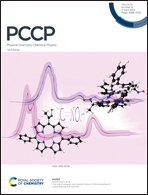Quantitative prediction of ternary mixed gases based on an SnO2 sensor array and an SSA-BP neural network model†
Abstract
This paper describes a tin oxide and copper doped tin oxide gas sensing material synthesized by a biological template method and simple hydrothermal reaction, which were used for the preparation of a gas sensor array. The sensor array is combined with the Sparrow Search Algorithm optimized BP neural network algorithm (SSA-BP) to predict and analyze the concentration of indoor toxic gases, including ammonia, xylene, and formaldehyde. Granular SnO2 was prepared by the biological template method and Cu/SnO2 doped with different copper ion concentrations was prepared by the hydrothermal method. The morphology of the synthesized nanomaterials was characterized by SEM, and the elemental composition and chemical state of the main elements were analyzed by XRD and XPS. The PL emission observed in the visible region is attributed to the defect level gap caused by oxygen. The optimal operating temperature, sensitivity, response/recovery time and the long-term stability of the sensor array have been studied. By combining the sensor array with the neural network algorithm in a simulated indoor environment at four humidity levels, the concentration information of the gas mixtures could be well predicted and the predicted concentration error was less than 0.84 ppm. Therefore, the sensor array prepared in this study combined with the SSA-BP algorithm achieved good results in predicting the concentrations of the three toxic mixtures.



 Please wait while we load your content...
Please wait while we load your content...